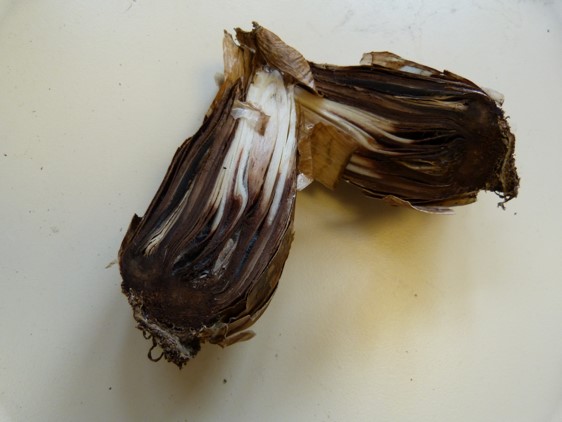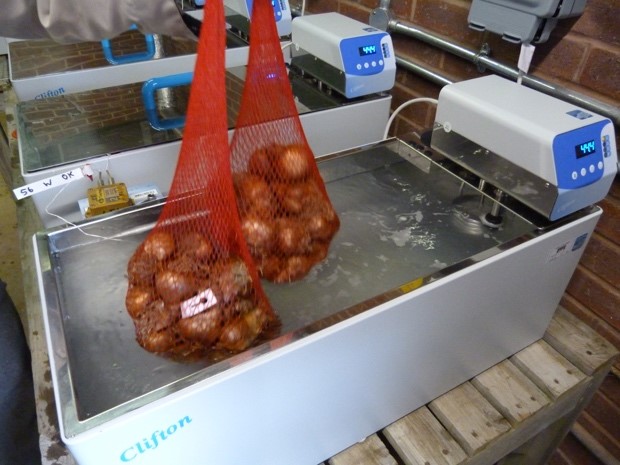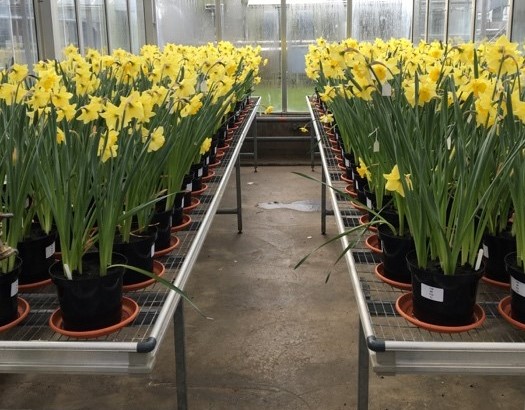Please click here to access the main AHDB website and other sectors.
- Home
- Hope for new control treatments for Fusarium basal rot in Narcissus
Hope for new control treatments for Fusarium basal rot in Narcissus
By Dr John Clarkson, Warwick Crop Centre, University of Warwick, June 2020
The soilborne fungal plant pathogen Fusarium oxysporum f.sp. narcissi (FON) continues to be a major problem for the UK Narcissus industry, causing a severe basal rot of bulbs (Fig. 1). Unfortunately, authorisations for the fungicides thiabendazole (Storite) and chlorothalonil (Bravo) have now been withdrawn, both of which have been used to manage the disease for many years as part of the hot water treatment (HWT) of bulbs for control of stem nematode. This leaves the industry without alternative products although cyprodinil + fludioxonil (Switch) has been recently approved.

Figure 1. Narcissus basal rot
Chemical and biological products were tested for their efficacy in reducing basal rot of Narcissus bulbs in HWT using a small scale system (Fig. 2). Test products were added to the tanks, bulbs (cv. Carlton) dipped and then planted into a suitable growing medium inoculated with FON in a pot-based glasshouse experiments (Fig. 3).

Figure 2. Hot water treatment of bulbs

Figure 3. Treated narcissus bulbs growing in the glasshouse
Following growth of the daffodils and dying down of the foliage, bulbs have recently been harvested and cut open to assess for basal rot. Encouragingly, it looks like there are some treatments which have reduced basal rot and this will be confirmed in the final report following statistical analysis.


